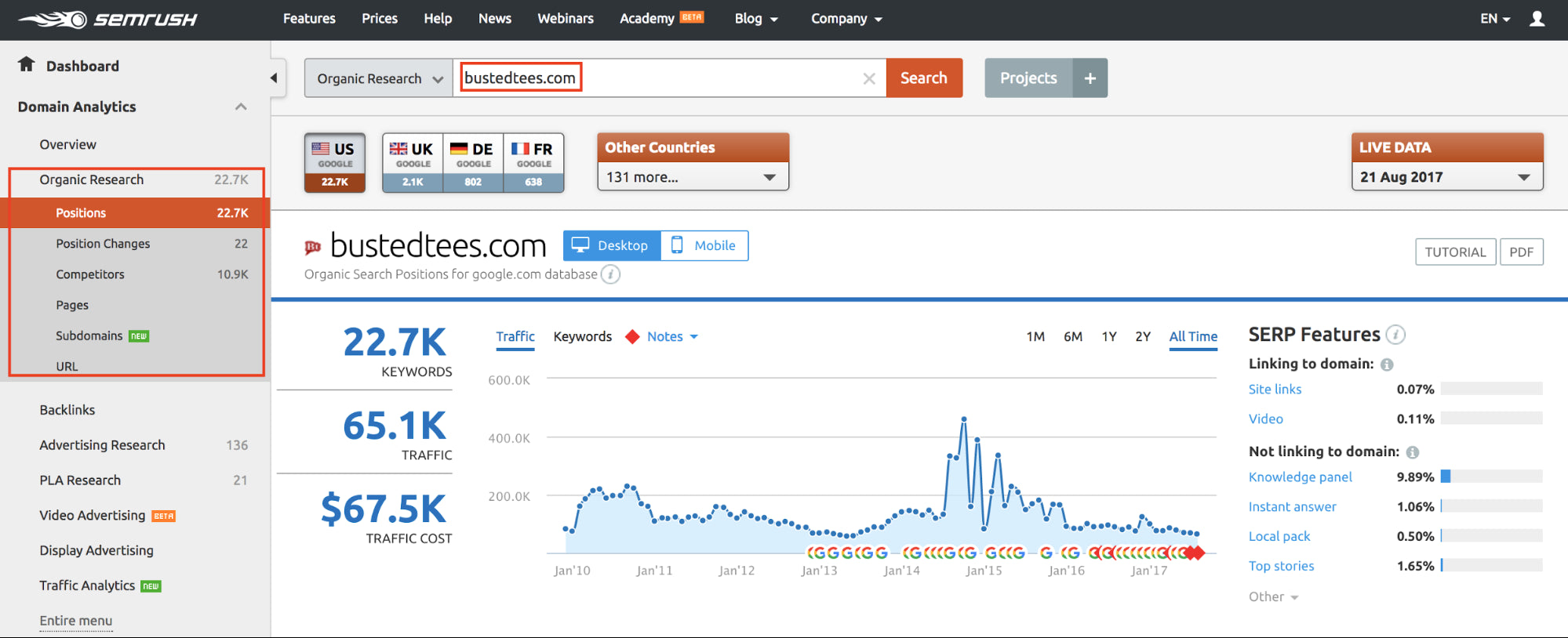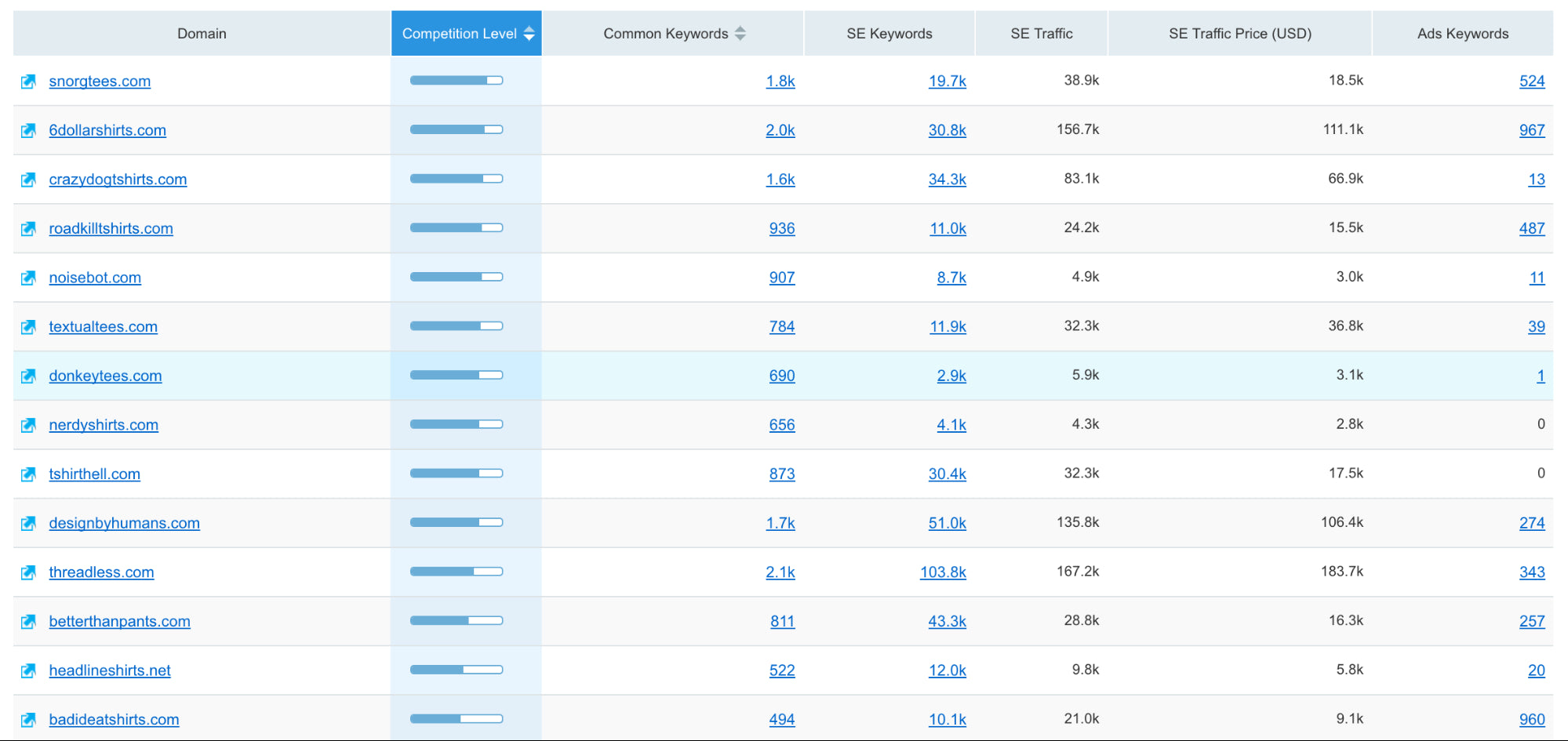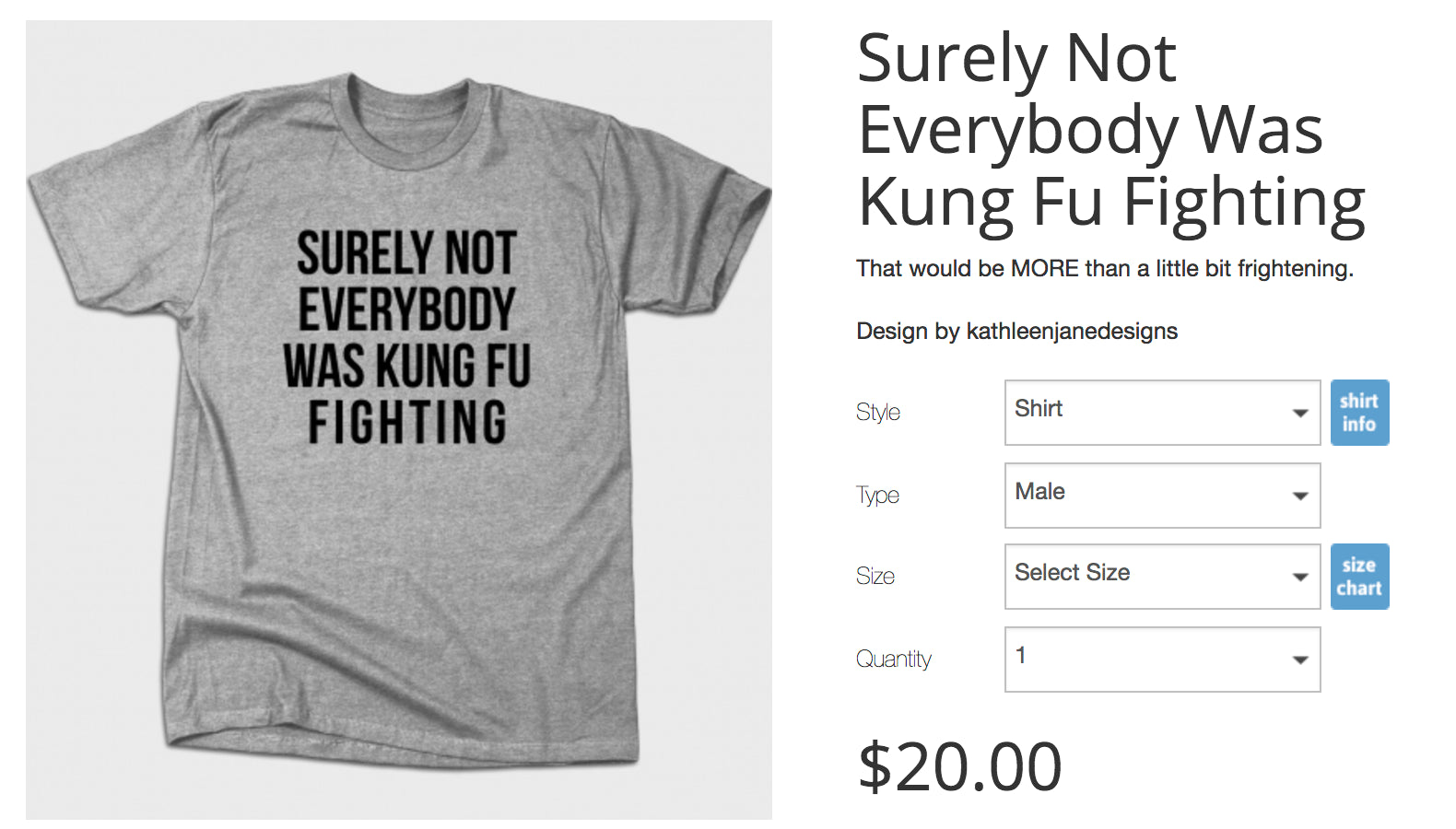Getting more traffic is top of mind for any business owner, so the thought of mastering ecommerce SEO has probably crossed your mind once or twice.
Consistent, high-quality traffic youdon’thave to pay for? Sign me up.
But between search engine algorithm updates and excessive industry jargon, it can be pretty difficult to get the hang of this whole ecommerce SEO thing.

Free Download: SEO Checklist
Want to rank higher in search results? Get access to our free, checklist on search engine optimization.
Get our SEO Checklist delivered right to your inbox.
Almost there: please enter your email below to gain instant access.
We'll also send you updates on new educational guides and success stories from the Shopify newsletter. We hate SPAM and promise to keep your email address safe.
这将带你从新手到初学者的指南novice as quickly and simply as possible. We’ll cover keyword research, site structure and organization, and on-page SEO.
First, what is SEO and why does it matter in ecommerce?
Search engine optimization (SEO) is the process of generating more organic (i.e. free, natural) traffic from sites like Google, Bing and Yahoo.
When you search for something on Google, for example, you are taken to the search engine results page (SERP):

There, you’ll find ten organic results, like these (red):

Alongside the paid ads (orange) and sponsoredGoogle Shopping(purple) results:

Ecommerce SEO is all about ensuring yourproduct pagesappear among those ten organic search results. Of course, there are many more pages to explore:

But the higher the page number you rank on, the lower the traffic you’ll generate.
A few years ago,a study foundthat only 4.8% of searchers make it to the second page of search results. Page 3? Only 1.1%. I suppose that’s why they say the best place to hide a dead body is on page two of Google.
Your rank on the first page matters as well. The same study found that the top result grabs 32.5% of traffic on average. The second result grabs only 17.6%. By result six? You’re looking at less than 5% of traffic on average.
The name of the game, then, is to rank as high on the first page of Google, Bing, Yahoo, etc. as you can for search terms that your potential customers might be using.
Step 1: Keyword Research
It shouldn’t be surprising that the first step is identifying those high-value search terms that your potential customers might be using. You can do that through keyword research, which can be conducted a number of different ways.
First, note that ecommerce keyword research is different than most of the keyword research you’ve read about online. Why? Most sites care about information keywords like this:

You, on the other hand, want to rank for commercial keywords like this:

Can you spot the difference? Information keyword searchers are looking for, well,information. Blogs and content-heavy sites care about these keywords. Ecommerce sites care about commercial keywords that showbuying intent.
Amazon and Google Suggest
Note: SinceGoogle is the most popular search engine in the world, I’m using that in screenshots and examples. You can repeat similar processes with most other search engines as well.
You’ve undoubtedly noticed (the often comical) Google search autocomplete feature. When you start to type your search query, Google suggests relevant queries:

At the bottom of the page, you’ll spot some additional related search queries:

These can be a goldmine for keyword ideas, especially when you already have a few basic keywords (like “raincoats for cats”) already in mind.
You can complete a similar process on Amazon, likely a competitor of yours. The great thing about Amazon suggestions is that they’re product-focused, unlike Google, which may contain some information keyword suggestions.
The process onAmazonis similar. Search for a keyword that’s relevant to one of your products:

This gives you some insight into potential product category names:

As well as some other potential keywords:

Be aware of long-tail keywords, which are usually three to four words in length. The longer the keyword, the more specific it is. That means lower competition and, often, higher conversion rates by nature.
You can use tools to automate this process. For example, KTD automates the process for bothGoogleandAmazon. This will save you a ton of manual labor time, especially if you have a big product catalog.
You can do even more digging on Amazon or, really, any major ecommerce store you compete with. First, check out their relevant product subcategories for keyword and category ideas for your store:

Then, zoom in on that “Full Store Directory” in the bottom, left-hand corner:

Jackpot! Let’s say you sell books. Find the category and choose the most relevant subcategory. Now you can see all of the different ways Amazon sorts and organizes its books:

Mix and match for new keyword and product category ideas. You might also find sub-subcategories to explore, which will give you even more ideas:

Repeat this process for any other major competitors.
Keyword Research Tool (SEMRush)
Up until now, we’ve been doing keyword research on the cheap. If you have $100 to spend on a one month subscription toSEMRush, I highly recommend it. It’ll take your keyword list from good to great.
Here’s how.
Let’s say you compete with BustedTees.com, a geeky t-shirt ecommerce store. All you’d have to do is enter the domain into a keyword research tool like SEMRush and select “Organic Research” from the left-hand menu:

Scroll down and you’re looking at all of the keywords BustedTees.com ranks for:

Boom! (You’ll also notice metrics like “Volume” and “KD” in the screenshot above, which we’ll get to in a minute.)
You can also switch to “Competitors”:

That will give you a big list of sites that are similar to BustedTees.com (or whatever site you entered):

Now you can repeat the same process for all of those sites. And you can use Gap Analysis to see what keywords all these competitive sites are ranking for, but your site isn’t:

Make sure you’ve selected “Unique Keywords”:

瞧!你有一个关键词列表你的薪酬etitor is ranking for, but you’re not:

Choosing the Right Keywords for Your Store
Your list of keywords is probablyprettybig right now. So, how do you narrow it down and focus on the keywords that matter most? Start with a few key factors.
1. Volume:The higher the search volume, the more potential traffic to your site. SEMRush will give you volume data, but so will free tools likeGoogle Keyword Planner.
High volume keywords often mean a lot of competition.
2. Competition:The lower the competition, the more likely you are to rank for the keyword. Again, SEMRush will give you keyword difficulty / competition (“KD”), but you can use a free tool likeMozBarto estimate competition. For example:

Page authority (PA) and domain authority (DA) give you insight into how difficult it would be to rank higher than these organic results. The higher the numbers, the more difficult (in general) it’ll be to unseat the result.
Overall, you’re looking forhighvolume,lowcompetition keywords.
3. Relevancy:How relevant is your product page or category page to the search term? This is a huge ranking factor that’s often neglected. Stick to keywords that your products wouldgenuinelysatisfy. You’re not foolin’ Google.
4. Intent:Again, you want to target keywords that show commercial intent. Usually, you can evaluate intent just by looking at a keyword. For example:
Step 2: Site Structure for Ecommerce
How the pages on your site are organized and structured affects your search engine rankings. It also affects your it’suser experience (UX). Basically, you want to make it easy for actual visitors and search engines to find stuff in your store.
Easier said than done.
As you add and remove products and categories, site structure gets complicated quickly. If you can get this right from the beginning, you’ll save yourself a ton of time down the road. So:
- Make sure your site structure is simple, but easy to scale as your store grows.
- Every page of your site is as few clicks from your homepage as possible.
Simplicity is underrated. You don’t want to have visitors relying on the back button to get around your site, running in circles trying to find what they’re looking for. You also don’t want to have to reorganize and rearrange your site structure every time you add a new product category, for example.
Most of your link authority is on your homepage, right? So, it makes sense that the more clicks away from your homepage a product page gets, the less authority it has.
Those are the basics. If you want to get a bit more advanced, Aleyda Solis ofOraintishared her top ecommerce SEO tip with me, which is all about site structure:
“Use the supply and demand principle to identify which levels of the website structure (from categories to attributes, brands or filters listing pages) are worthy to index and optimize for as they fulfill an actual audience demand.”
For those of you wondering, “index” is another name for the database used by a search engine. So “to index” a page is to have it added to that database. In other words, Google has discovered your page.
Aleyda continues:
“This is because one of the most common issues for ecommerce sites is thin content as well as content duplication issues. Many of the thin content and content duplication scenarios happen because there are many internal levels of the website structure, such as filters and attribute-focused pages that have very few products, which are also included in other pages.”
Thin content is the idea that there’s not much actual text on an ecommerce site compared to, say, a blog or software site. Imagine dozens and dozens of thin content pages created because of random product attribute and product filter pages. Some of those pages might only list one or two products.

Content duplication is as straightforward as it sounds.
Aleyda explains:
“The easiest, and very common, way to handle this situation is to just noindex or canonicalize (to others) these types of pages, since it is easier than to create specifically relevant and useful content for them to become different, relevant and competitive. Although this might be the most straight-forward way to handle this, it is not the best to make the most out of the existing search opportunities and effectively address the user search behavior with your content (and product) offering.”
Canonicalizing a page is a way of telling Google that this URL is the “master version” you’d like to display in search results. This is helpful in duplicate content situations because Google certainly picks up on them. Without canonical tags, Google might:
- Miss unique content wading through too much duplicate content.
- Dilute your ranking ability.
- Choose the wrong “master version” for you.
Note that if you’re using Shopify, auto-generated canonical tags are added to pages to prevent duplicate content from appearing in search results.
Aleyda suggests going beyond noindex or canonicalization when you’re ready, though:
“It's then fundamental to assess first if there's enough search queries around the specific product’s characteristics, types or brands that you're offering with each level of your e-commerce content (in order to identify if it's worth it or not to index it). And if so, if there's enough content offering on the specific page and if it's aligned with the way the user searches for it or if you should take additional effort to expand and optimize it to make it relevant and competitive.
If there isn’t and it's also not optimized and you need to take additional effort with it, then you know it's going to pay off as you have already validated that there's a demand, with enough searches for it.”
That’s a lot of information, especially for someone new to ecommerce SEO. Luckily, Aleyda left us with this handy chart to help visualize the process she goes through:

The big takeaway here? Not every level of your site structure is worth indexing and optimizing, so be strategic and refer to the chart above.
Step 3: On-Page SEO for Ecommerce
Now that you’ve done your keyword research and your site structure is ready to rock, let’s talk about how you can optimize your two highest value pages:
- Product category pages.
- Product pages.
Not surprisingly, it starts with the basics.
The Basics
If you’re already using Shopify, you likely know that有一些内置的搜索引擎优化功能you can take advantage of. Some are automagic:
- The canonical tags we talked about earlier.
- Your website’s sitemap.xml and robots.txt files are generated.
- Themes generate title tags that include your store name.
- Themes are required to have social media linking and sharing options.
But some features require your optimization skills:
- You can edit the title tags and meta descriptions to include your keywords.
- You can edit the alt text for images to include your keywords.
- You can make sure your file names include your keywords.
- 你可以决定e the URLs for blog posts, webpages, products and collections.
When optimizing your title tags and descriptions, note that these are Google-facing. So, step one is ranking on the first page. Step two is convincing searchers to actually click through to your site.
修饰符,如“交易”,“X %”,“免费送货”,“Wide Selection”, etc. can give you a boost. Why? BecauseGoogle is suspectedto use clickthrough rate (CTR) as a ranking factor. So, it’s not enough to cater to the search engine overlords, you have to pique searcher interest, too.

Those modifiers can also help you attack long-tail keywords.
1. Choose the right URLs.
According to Rand Fishkin and the Moz team, there are a few URL guidelines to follow for optimal ranking:
- Your URL should be easy for real, live humans to read and interpret because accessibility matters to Google.
- Using your keywords in URLs is still highly encouraged as they show up in search results.
- Short URLs are better than long URLs. Try to keep it below 50-60 characters.
- Match the URL and page title as closely as possible.
- Don’t include stop words like “and”, “of”, “the” and “a”.
- Keyword stuffing and pointless repetition don’t trick Google and make your store look spammy.
Keep these guidelines in mind when choosing your product page and category page URLs.
2. Reduce thin content pages with long product descriptions.
Google and other search engines use the content on your page to decide which keywords to rank your page for and how high your page should rank for each keyword.
So, if your product page has a short little description and not much else, Google doesn’t have a whole lot to go on.

That’s why you’ll see product pages with longer descriptions, reviews, etc.

Write long, in-depth descriptions for your products so that Google can work its magic more effectively. If your catalog is huge, focus on your top products or on products ranking on the bottom of the first pageorthe top of the second page.
The more you write, the more accurate Google can be in ranking your page. And, well, the more opportunity for using your keywords.
Plus, let’s face it, as long as you have a high-level description for the highly motivated, your customers won’t hate the extra product info, either.
3. Take advantage of Latent Semantic Indexing (LSI) keywords.
LSI keywords are closely related to your main keyword.
You can find these through either a quick Amazon (or other big-name competitor) search or good old Google Keyword Planner, which we talked about above.
On Amazon, search your main keyword and look for secondary keywords that keep popping up. For example, let’s say you’re trying to sell a blender:

“14速度”、“450 w”和“48盎司玻璃罐”都是你p multiple times, indicating they’re strong selling factors and likely common elements of search terms.
You can also try running your keyword through Google Keyword Planner, which I mentioned earlier, to get some LSI keyword ideas:

If you’re getting traffic from that main keyword, you might as well try to slide onto the first page for related secondary keywords as well. So, use these LSI keywords whenever they make sense.
Conclusion
There isso much morethat goes into ecommerce SEO. I’m talking technical SEO, link building, content marketing for ecommerce… the list goes on.
But these first three foundational steps will set you on the right path (and likely keep you busy) for now.
If you’re ready to dive into more ecommerce SEOright now, here are some other articles you can check out:
- A Simple Guide to Writing Exceptional Meta Descriptions
- Ecommerce Analytics for Absolute Beginners: A New Guide
- Ecommerce SEO Checklist: The Fundamentals and Best Practices to Rank Your Site


